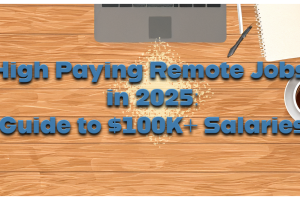Did you know only 3-5% of blogs achieve significant financial success? The US alone hosts over 31.7 million blogs, yet what creates a successful blog remains a mystery to most content creators.
My 10+ years in the blogging world taught me valuable lessons. I watched my blog grow from just 10-15 daily views to an impressive 90,000-180,000 views per day. This journey came with challenges though – 38% of bloggers struggle to create quality content consistently.
The good news awaits those who persist. Businesses with active blogs generate 55% more traffic than those without, while B2B companies can attract up to 67% more leads through effective blogging. These 10 essential factors will help you join successful bloggers who’ve cracked the code to sustainable growth, whether you’re starting fresh or improving your existing blog.
1. Choose Your Niche Wisely
The foundation of every successful blog starts with selecting the right niche. Research shows blogs with clearly defined niches gain more traction and build loyal audiences. A well-defined niche sets the stage for everything that follows—from content creation to monetization strategies.
Finding Your Passion and Expertise
Select a niche by identifying what you’re genuinely passionate about. When you choose a topic you love, your enthusiasm stays high even when traffic is slow. One blogging expert asks, “What do you enjoy doing so much that it would be hard to get bored with it?” [15]
Your expertise matters, but you don’t need to be the world’s top authority. Focus on areas where you have knowledge or strong interest. Remember, you only need to know more than your readers [15]. Many successful bloggers started by documenting their learning journey, sharing insights as they developed skills. This creates authenticity that connects with audiences on similar paths.
Researching Market Demand
Passion alone isn’t enough—your niche needs sufficient demand. A viable blog market has four essential components:
- A group with clearly defined desires or problems
- People actively looking for solutions
- An audience with the ability to pay
- Readers willing to spend money on solutions [15]
Before committing to your niche, check forums like Reddit and Quora to spot recurring questions in your potential topic area [4]. Use keyword research tools to measure search volume for topics within your niche. This helps confirm an audience exists before you invest time creating content.
Identifying Your Target Audience
Your target audience is the specific group most likely to benefit from your blog content [13]. Defining this group precisely helps you create content that addresses their specific needs rather than trying to appeal to everyone.
Consider segmenting your audience based on:
- Demographics (age, gender, income, education)
- Interests and hobbies
- Pain points and challenges
- Goals and aspirations
Create detailed buyer personas—profiles of your ideal readers—to visualize who you’re writing for [13]. Think about real people you know who might read your blog; this makes your audience feel real and helps you craft more relevant content [15].
Narrowing Down Your Focus
One fundamental blogging truth: “A niche that applies to everyone is kind of a bad niche” [15]. Broad topics like “personal development” or “lifestyle” lack specificity, making it hard to establish authority or connect with a dedicated audience.
Narrow your focus by:
- Taking a broad topic and focusing on a specific aspect
- Targeting a particular demographic within that interest
- Applying a unique approach or perspective
For example, instead of “parenting,” focus on “parenting toddlers on a budget” [15]. This specificity might seem limiting, but the more you narrow your focus, the more you broaden your audience [15]. Speaking directly to a specific group’s needs creates more meaningful connections.
Finding your perfect niche often requires experimentation. Many successful bloggers adjust their focus after seeing which content resonates most with their audience [2]. Start with a reasonably defined direction, then refine based on audience feedback and analytics.
2. Create Engaging Content
Even the best niche fails without compelling content. Research shows online readers typically read only about 20% of text on a page [13], making engagement critical for blog success.
Understanding What Your Readers Want
Content that resonates requires deep audience understanding. Online attention spans last as little as eight seconds [8], so knowing reader preferences becomes essential. Getting into your ideal reader’s head helps grab attention and maintain engagement throughout your posts [8].
Success comes from studying:
- Comments, likes, and shares to spot top-performing content
- Previous content to identify past successes
- Similar content creators with comparable audiences [8]
Detailed reader personas help determine what content your audience wants to consume and what keywords they actually search for [13].
Crafting Compelling Headlines
Headlines work as “elevator pitches” for your content—they must be clear, enticing, and informative [8]. Try these headline strategies:
Include numbers when possible. People love statistics, and they fulfill all three objectives of good headlines: clarity, information, and enticement [8]. Use action-oriented language with powerful verbs like “Achieve,” “Discover,” or “Experience” to show readers what they’ll gain [8].
Blog titles dramatically impact a post’s destiny. David Ogilvy noted, “the purpose of a title is to get potential readers to read the first line of your content” [14]. Headlines appear in search results, RSS feeds, social media, and archives—often the only basis for someone deciding whether to read your post [14].
Using Storytelling Techniques
Stories engage readers’ imagination in ways facts and theories alone cannot [15]. They trigger emotions, making content more memorable—while people don’t always remember facts and figures, a good story stays with them for years [15].
Effective stories:
- Go beyond facts to create emotional connections
- Reveal something personal about you as a blogger
- Stimulate conversation and encourage others to share experiences
- Provide relatable hooks for readers [15]
Our brains process stories differently than logical explanations. Stories engage the emotional “I-once-felt-that-too” part of our minds [14], making content more powerful and persuasive.
Including Visual Elements
We process visuals 60,000 times faster than text [8], making visual content more likely to grab attention, maintain interest, and stick in memory. High-quality images in blog posts boost SEO and drive more traffic to your website [2].
Visual elements serve multiple purposes:
- Breaking content into digestible sections
- Making complicated information easier to understand
- Enhancing professional appearance
- Supporting key points with examples [13]
Studies show blog posts with images get 94% more views than text-only posts [8]. Research indicates videos can increase time spent on a page by four times [2].
Engaging content keeps readers in mind throughout the entire piece, focusing on what helps them interact with your posts, what format fits their busy lifestyles, and what makes reading your content more enjoyable [8].
3. Optimize for Search Engines (SEO)
Search engines drive roughly 53% of blog traffic [13], making SEO a critical element of any successful blog. Your niche and content might be excellent, but without proper optimization, potential readers will never find you.
Keyword Research Fundamentals
Keyword research forms the foundation of effective SEO – finding and analyzing search terms people type into search engines [16]. This research reveals what my target audience actively searches for, allowing me to create content addressing those specific queries.
For best results, I focus each blog post on one primary keyword [15]. Search engines get confused about the main topic when I try to optimize for multiple keywords simultaneously [15]. New blogs should target long-tail keywords – specific phrases with three or more words facing less competition [15].
Several approaches help find these keywords:
- Google’s autocomplete suggestions
- Answer The Public (a free tool generating question-based keywords)
- Google Keyword Planner for search volume data [7]
The best keywords address readers’ search intent – their motivation behind searching [4]. Knowing whether someone wants information, navigation to a site, or to make a purchase helps create content that truly satisfies their needs.
On-Page SEO Best Practices
On-page SEO means optimizing website elements so pages rank in search engines and attract new traffic [13]. Every aspect falls completely under my control, so correct implementation becomes essential [13].
Each blog post needs strategic placement of the primary keyword in:
- The title tag (most important SEO element) [13]
- First paragraph and conclusion [15]
- At least one H2 or H3 subheading [15]
- URL structure (keeping it short and descriptive) [15]
- Meta description to improve click-through rates [15]
Images play a crucial role in SEO too. Descriptive alt text functions as “SEO for images” [13]. Studies show blog posts with images receive 94% more views than text-only content [4].
Technical SEO Considerations
Technical SEO optimizes websites to help search engines find, crawl, understand, and index pages [10]. Even outstanding content fails when technical issues prevent search engines from properly ranking your blog.
Several technical factors impact blog SEO significantly:
- HTTPS security: Search engines favor secure sites [11]
- Mobile optimization: Over half of Google searches come from mobile devices, making responsive design essential [4]
- Page speed: Slow-loading pages frustrate readers and hurt rankings [12]
- XML sitemap: This helps search engines discover and index all blog posts efficiently [15]
Google Search Console helps monitor site technical health. The Performance Report shows which keywords drive traffic while Coverage checks ensure all pages get properly indexed [15].
Creating SEO-Friendly Content Structure
Content organization affects both user experience and search rankings. Readers typically read only about 20% of text on a page, making structure vital [4].
Headers (H1, H2, H3) work as signposts for readers and search engines, breaking content into scannable sections [13]. Clear hierarchy and descriptive subheadings containing relevant keywords improve organization.
Internal linking – connecting to other posts within your blog – creates paths for users while helping search engines understand site structure [13]. Each new post should include 5-10 internal links from existing content to the new piece and vice versa [15].
Target Featured Snippets – those highlighted excerpts at the top of search results [15]. Definition snippets need clear definitions, while list snippets require organized subheadings throughout the post [15].
Implementing these SEO practices makes your blog not just well-written but also discoverable – the perfect combination for success.
4. Build an Email List
Your email list stands as your blog’s most valuable asset—giving you direct audience access no algorithm change can take away. After search engine optimization, collecting email addresses becomes your next priority for establishing sustainable reader connections.
Why Email Marketing Matters for Bloggers
Email marketing delivers unmatched effectiveness with impressive returns—averaging $35 for every dollar spent [2]. This remarkable ROI comes with a direct audience channel you completely own and control.
Social platforms offer only “rented land” while email subscribers truly belong to you. This direct connection enables personalized communication social media cannot match. Personalized email campaigns lift transaction rates and revenue six times higher than non-personalized messages [13].
Bloggers benefit specifically as email marketing maintains follower connections during posting gaps, builds community around content, and creates predictable audience touchpoints [8].
Creating Lead Magnets That Convert
Lead magnets work through value exchange—you offer something free and valuable, readers provide their email address [14]. Success depends on creating something your audience genuinely wants.
Effective lead magnets must be:
- Highly relevant to your reader’s immediate needs
- Actionable and providing a quick win
- Valuable enough that people would willingly pay for it
- Short and focused rather than overwhelming [15]
Popular formats include checklists, templates, mini-courses, ebooks, exclusive reports, and worksheets [14]. The perfect lead magnet solves a specific audience problem at the moment they need it.
Setting Up Your Email Marketing System
Collecting emails requires signup forms strategically placed throughout your blog. Research suggests these forms work best when:
- Embedded within your content
- Featured on your sidebar
- Added as pop-ups that appear after visitors spend time on your site
- Included as dedicated landing pages you can link from social media [2]
Choose an email marketing platform offering user-friendly templates, list management tools, automation capabilities, and analytics [8]. Beginners should focus on simplicity and affordability while ensuring the platform grows with their needs.
Nurturing Your Subscribers
Welcome new subscribers immediately with automated emails. These first messages enjoy exceptionally high open rates because subscribers actively expect them [2].
Segment your growing list based on interests and behaviors. Companies using segmented email campaigns have seen revenue increases up to 760% [13]. Segmentation delivers more relevant content to specific groups, improving engagement and building trust.
Maintain consistent communication providing genuine value beyond promotions. Respect relationships by giving subscribers control over email frequency and content types [16]. Your emails should feel like gifts, not gimmicks—truly helpful content from a real person, not just another marketing message [15].
5. Promote on Social Media
Social media platforms function as powerful distribution channels for your blog content, putting your ideas before thousands of potential readers. Your audience searches for information across various platforms just as actively as they do on search engines.
Choosing the Right Platforms for Your Niche
Not all social media platforms work equally well for bloggers. Focus on where your target audience actually spends their time rather than spreading yourself thin across multiple networks [17]. Consider these patterns:
- Visual content creators thrive on Instagram and Pinterest
- Technical and business bloggers find better engagement on LinkedIn and Twitter
- Video-focused content performs best on YouTube and TikTok
Examine what competitors in your niche do successfully before committing to any platform [5]. Start with 2-3 platforms where you can maintain consistent quality, then expand as your blog grows.
Creating a Social Media Content Calendar
Consistency matters for social media success—algorithms favor accounts that post regularly [18]. Develop a strategic content calendar that helps maintain this consistency.
Determine your optimal posting frequency first. Facebook may require 3-7 posts weekly, while Twitter might need 15 posts daily for maximum engagement [19]. Batch create content ahead of time to maintain quality without burning out. Use scheduling tools like Hootsuite or SocialPilot to automate posting at optimal times [20].
Weekly planning sessions work best for most bloggers, allowing flexibility for trending topics while maintaining structure [18].
Engaging With Your Social Media Audience
Social media without engagement is just media [21]. Build a genuine community around your blog by:
Responding promptly to comments and messages—social media works as a two-way street [21]. Create interactive content like polls, questions, and contests to encourage participation [22]. Share other bloggers’ content and engage with industry conversations to build relationships [6].
Remember that social platforms exist for interactions, not just broadcasting your content [6].
Using Social Media Analytics to Improve Strategy
You can’t determine if your social strategy works without tracking metrics [23]. Social analytics help you:
Track engagement rates to identify content that resonates with your audience [24]. Discover optimal posting times based on when your audience shows most activity [18]. Measure conversion from social media to your blog through proper tracking [23].
Regular analysis of these metrics helps refine your strategy, focus on top-performing content types, and allocate resources to platforms delivering the best results [24].
6. Engage with Readers
Building genuine connections with your audience transforms casual readers into loyal followers and blog advocates. Reader engagement creates lasting relationships, not just increased page views.
Responding to Comments Effectively
Readers who comment deserve acknowledgment. Comments make people feel valued and heard while attracting more visitors through discussion [25]. Respond quickly—77% of customers consider fast responses a company’s best offering [26]. Thoughtful comments sharing experiences or asking questions present opportunities to deepen conversations [25]. Critical comments require professional responses. See their perspective and address concerns directly rather than taking criticism personally [26].
Creating Interactive Content
Interactive elements generate 2X more conversions than static content [27]. Move beyond passive reading experiences with content requiring active participation, such as:
- Quizzes testing knowledge or revealing personality traits
- Polls and surveys collecting opinions
- Clickable elements like tables of contents
- Embedded videos and animated GIFs
These additions make your content more memorable while gathering valuable feedback about audience preferences [28].
Building a Community Around Your Blog
A thriving community validates your blog’s credibility and authority [29]. Foster belonging by showing readers who you are and what motivates your blogging [29]. Help readers connect with each other outside your blog. This creates deeper connections and boosts engagement quality on your platform [30]. Aim for readers engaging with each other, not just with you [31].
Using Feedback to Improve
Reader feedback offers invaluable insights for blog development. Comment analysis reveals what resonates with your audience and what needs improvement [32]. Look beyond comments to metrics like page views and time on page for understanding content performance [33]. Use this feedback to create new content addressing specific reader needs [33]. This listening and responding cycle shows you value their input, building trust that keeps them returning [32].
7. Publish Consistently
Consistency stands as the least celebrated yet most crucial factor in blogging success. Research shows regular publishing schedules set reader expectations and help test which content types perform best [1]. Blogs with consistent posting schedules typically outperform those with sporadic content, regardless of niche.
Developing a Realistic Publishing Schedule
Setting attainable goals forms the key to consistency. Studies suggest publishing 2-4 times per week provides optimal results for both traffic and conversions [34]. Your ideal frequency depends on specific circumstances. Consider:
- Your content goals and audience expectations
- Available time and resources
- Competitor publishing frequency
Start with a manageable commitment—perhaps once weekly—to create momentum you can build upon. Blogging expert James Clear advises, “Sacrifice the scope, not the schedule” [1]. A shorter, timely post beats a missed deadline every time.
Creating an Editorial Calendar
An editorial calendar turns publishing intentions into concrete plans. This visual workflow tracks content through every production stage while providing structure for creating batches of content [35].
Using an editorial calendar offers several benefits:
- Improved content quality and consistency
- Better teamwork and streamlined processes
- Enhanced data insights for performance tracking
Beginners can start with a simple spreadsheet. List planned topics, publishing dates, and assign tasks with clear deadlines [36].
Batching Content Creation
Content batching—creating multiple pieces at once—improves productivity significantly. This technique focuses your creative energy without constant gear-shifting [37].
Implement batching by setting aside dedicated time blocks for similar tasks. Dedicate one session to researching multiple topics, another to writing several posts, and a third to creating visual elements [38].
Maintaining Quality While Being Consistent
Quality remains paramount despite the importance of regularity. Perfectionism kills projects, yet “done is better than perfect” should never mean publishing subpar content [1].
Maintain standards while posting consistently by incorporating planned breaks into your schedule [39]. Build a reserve of evergreen posts for publication during busy periods [34]. Consistency in blogging creates a reliable rhythm your audience can count on, not necessarily posting every single day.
8. Ensure Your Website is Easy to Navigate
Image Source: Orbit Media
A well-structured, easy-to-navigate website forms the backbone of successful blogging, directly influencing how visitors interact with your content. Navigation affects everything from search rankings to conversion rates, making it a fundamental element of blog success.
Designing an Intuitive Site Structure
Intuitive site structure guides visitors through logical pathways so they quickly find what they need. Poor structure causes 34% of visitors to leave a page [9], costing you valuable readers. Your navigation menu should tell visitors about your work while helping search engines understand your site organization.
When designing your navigation:
- Use descriptive labels with keyphrases instead of generic terms like “products” or “services”
- Limit primary navigation items to 5-7 options to avoid overwhelming visitors
- Group related content logically into categories and subcategories
- Include a search feature for blogs with extensive content
Mobile Optimization Essentials
Mobile devices now generate over 63% of web traffic [40], making mobile optimization essential, not optional. Google uses mobile-first indexing, primarily using your site’s mobile version for ranking [41].
Effective mobile navigation needs a clean “hamburger” menu that expands when tapped and clickable elements and hyperlinks large enough for easy tapping. Design for one-handed use by placing essential elements within thumb’s reach61, and test your site regularly on various mobile devices.
Page Speed Optimization
Page speed directly impacts visitor retention—47% of people expect pages to load in 2 seconds or less, and 40% abandon sites taking more than 3 seconds to load [43]. Slow loading times create higher bounce rates and lower conversions.
Enhance website loading times by optimizing image sizes while maintaining clarity, setting up browser cache, reducing HTTP calls, and implementing a CDN. Use Google PageSpeed Insights regularly to monitor performance and spot areas needing improvement.
User Experience Best Practices
Your navigation should become invisible—when users complete tasks without stopping to think, you’ve achieved intuitive design [44]. Establish clear visual hierarchy using contrasting colors, consistent typography, and sufficient whitespace to guide visitors’ attention.
Keep navigation elements in the same location on every page to maintain consistency throughout your site. Add breadcrumbs to help visitors understand their location within your site, especially valuable for blogs with extensive content categories.
9. Monetize Your Blog
Turning your blog into a revenue-generating asset demands strategic monetization planning. Building an audience and establishing consistent traffic naturally leads to income generation as your next step toward long-term blog success.
Different Monetization Methods
Several proven methods exist to monetize blogs, each offering unique advantages:
Advertising provides one of the most straightforward approaches—displaying ads through networks like Google AdSense generates income based on impressions or clicks. Affiliate marketing lets you earn commissions by recommending products relevant to your audience. Industry data shows this method has one of the lowest barriers to entry [45].
Sponsored content involves partnering with brands to create promotional posts for payment. Paid memberships or subscriptions deliver recurring revenue while digital products like ebooks and courses create passive income opportunities [46].
When to Start Monetizing
The monetization timing debate features two main perspectives [47]. Some experts suggest waiting until you establish substantial traffic, while others recommend monetizing from day one. The day-one approach offers several advantages.
Early monetization generates some immediate income. Your audience grows accustomed to seeing monetization elements from the beginning. The process provides valuable learning opportunities through experimentation [47].
Don’t invest excessive time in monetization too early, though. Focus primarily on content quality, audience building, and engagement while implementing basic monetization structures.
Creating Products and Services
Creating your own products typically yields higher returns than promoting others’. Digital products like ebooks, online courses, and memberships offer excellent options—they need significant initial effort but deliver ongoing passive income [48].
Established blogs with engaged audiences benefit from coaching or consulting services as high-value monetization avenues that directly leverage your expertise [3].
Balancing Monetization and User Experience
Successful blogs maintain a careful balance between monetization and user experience. Poor implementation drives readers away, undermining long-term profitability [49].
Achieve this balance by personalizing monetization elements to individual users. Maintain transparency about what users pay for. Gather and implement feedback continuously to refine your approach [49].
Your most engaged community members typically become your customers [50]. Creating value should always precede monetization efforts—your audience’s needs form the foundation upon which your monetization strategy builds.
10. Network for Backlinks
Backlinks function as external validation of your blog’s quality, signaling to search engines that your content deserves attention. Strategic networking for quality links, the 10th crucial element for blog success, can dramatically elevate your site’s authority.
Understanding the Value of Quality Backlinks
Quality beats quantity when building backlinks. High-quality links from authoritative websites work as “votes of credibility” from other sites, telling search engines your content has value and trustworthiness. A single backlink from a respected site outweighs dozens of low-quality links. The best backlinks come from trusted, authoritative websites topically related to yours that include your target keywords in their anchor text.
Guest Posting Strategies
Guest blogging remains a powerful way to earn quality backlinks. Write content for someone else’s website to gain exposure, establish authority, and secure valuable links. Before pitching, get familiar with the target blog by engaging with their content. Personalize your emails, explain clearly why you’d make a good contributor, and follow any published guidelines. After acceptance, create exceptional content serving the host blog’s audience while naturally including a few relevant links.
Building Relationships with Other Bloggers
Long-term networking produces the most valuable backlinks. Start by showing generosity—help other bloggers achieve their goals without expecting immediate returns. Engage meaningfully on their social media, leave thoughtful comments, and share their content. Focus first on bloggers at your level or in neighboring niches, since highly popular bloggers receive countless outreach attempts daily. Authentic relationships develop gradually as trust builds over time.
Creating Link-Worthy Content
Sustainable link building ultimately requires creating content others genuinely want to reference. Develop comprehensive guides, original research, case studies, or eye-catching infographics that fill information gaps in your niche. These “linkable assets” naturally attract references from other sites. Methods like the broken link building technique—identifying broken links on relevant websites and offering your content as replacement—can work exceptionally well for earning quality backlinks.
Conclusion
Starting a successful blog demands careful attention to multiple interconnected elements. My decade of blogging experience shows how these 10 essential factors work together, creating sustainable growth and engagement.
Each element builds on others – choosing the right niche guides content creation, while SEO ensures that content reaches your target audience. Email lists and social media expand your reach, reader engagement forms community, and consistent publishing maintains momentum. A well-designed website keeps visitors exploring your content, monetization strategies provide sustainability, and strategic networking builds influence through quality backlinks.
Success takes time – only 3-5% of blogs achieve significant financial results. Businesses with active blogs generate 55% more traffic than those without, though. These statistics confirm that following proven strategies with patience and persistence pays dividends.
My journey from 10 daily views to over 90,000 taught me that blogging success requires marathon thinking, not sprint tactics. Focus first on delivering genuine value through your unique perspective and voice. The rest – engagement, traffic, and income – follows naturally when you consistently apply these fundamental elements while staying true to your vision and audience.
If you are looking for more useful tips on blogging or running a blog, check this post: How to Make Money Blogging
Citations
[1] – https://www.blogmarketingacademy.com/narrow-down-niche/[2] – https://twinsmommy.com/expert-in-your-blog-niche/
[3] – https://www.blogsavvypanda.com/how-to-choose-a-profitable-blog-niche/
[4] – https://www.adobe.com/express/learn/blog/target-audience
[5] – https://www.wpbeginner.com/beginners-guide/how-to-choose-a-target-audience-for-blogs/
[6] – https://www.simplestructuredmama.com/time-tested-tips-for-narrowing-your-blogs-focus/amp/
[7] – https://lavandamichelle.com/2025/03/09/how-to-find-your-niche-and-build-a-loyal-blog-audience/
[8] – https://goinswriter.com/blog-focus/
[9] – https://thehomeboss.com/find-your-blogging-niche/
[10] – https://www.hubspot.com/blog-readers
[11] – https://jetpack.com/resources/six-ways-to-create-more-engaging-blog-posts/
[12] – https://problogger.com/how-to-craft-post-titles-that-draw-readers-into-your-blog/
[13] – https://problogger.com/why-stories-are-an-effective-communication-tool-for-your-blog/
[14] – https://smartblogger.com/storytelling/
[15] – https://www.marketingprofs.com/articles/2022/47799/10-tips-for-writing-engaging-blog-posts
[16] – https://www.constantcontact.com/blog/engage-readers/
[17] – https://visitorplugin.com/article/best-practices-writing-blog-content-that-converts/
[18] – https://blog.hubspot.com/blog/tabid/6307/bid/33655/a-step-by-step-guide-to-flawless-on-page-seo-free-template.aspx
[19] – https://blog.hubspot.com/marketing/how-to-do-keyword-research-ht
[20] – https://backlinko.com/hub/content/blog-seo
[21] – https://www.kalungi.com/blog/how-to-write-an-seo-friendly-blog
[22] – https://blog.hubspot.com/marketing/blogging-for-seo
[23] – https://ahrefs.com/blog/technical-seo/
[24] – https://neilpatel.com/blog/technical-seo/
[25] – https://www.semrush.com/blog/technical-seo/
[26] – https://www.shopify.com/blog/build-email-list
[27] – https://www.onlyinfluencers.com/email-marketing-blog-posts/best-practice-email-strategy/entry/nurturing-your-email-subscribers-how-to-create-email-campaigns-that-build-trust-and-loyalty-with-your-subscribers
[28] – https://sendgrid.com/en-us/blog/email-marketing-for-bloggers
[29] – https://ghost.org/resources/lead-magnets/
[30] – https://www.freelancecake.com/blog/create-the-perfect-lead-magnet
[31] – https://granicus.com/blog/4-foolproof-steps-to-nurturing-and-retaining-email-subscribers/
[32] – https://digitalmarketinginstitute.com/blog/which-social-media-platforms-should-you-use-for-your-business
[33] – https://www.linkedin.com/advice/3/how-can-you-choose-best-social-media-platforms-your-blog-0la3f
[34] – https://blog.hootsuite.com/social-media-calendar/
[35] – https://socialbee.com/blog/social-media-content-calendar/
[36] – https://www.woorank.com/en/blog/promoting-your-blog-on-social-media
[37] – https://buffer.com/resources/social-media-engagement/
[38] – https://www.thepod.agency/insights/engaging-your-social-media-audience
[39] – https://problogger.com/using-social-media-to-grow-your-blogs-readership/
[40] – https://sproutsocial.com/insights/social-media-analytics/
[41] – https://blog.hootsuite.com/social-media-analytics/
[42] – https://nathanieltower.com/the-complete-guide-to-handling-comments-on-your-blog/
[43] – https://betterblogcomments.com/blogs/guides/how-to-respond-to-blog-comments-7-tips
[44] – https://blog.hubspot.com/marketing/interactive-blog-post
[45] – https://brand24.com/blog/create-interactive-blogs/
[46] – https://magnet4blogging.net/build-a-blog-community/
[47] – https://problogger.com/community-principles-of-successful-blogging-4/
[48] – https://thebbsagency.com/blog/how-to-build-a-culture-of-community-on-your-blog/
[49] – https://aicontentfy.com/en/blog/utilizing-reader-feedback-to-improve-blog
Citations 50 – 70
[50] – https://aicontentfy.com/en/blog/impact-of-reader-feedback-on-blog[51] – https://monday.com/blog/marketing/how-to-create-a-content-strategy-and-realistic-publishing-schedule-for-your-blog/
[52] – https://www.growthmachine.com/blog/blogging-schedule
[53] – https://blog.hubspot.com/marketing/business-blog-editorial-calendar-templates
[54] – https://wgcontent.com/blog/editorial-calendar-tips/
[55] – https://buffer.com/resources/content-batching/
[56] – https://thrifdeedubai.com/blogger/the-most-realistic-blogging-schedule-you-will-ever-need/
[57] – https://www.productiveblogging.com/blog-consistently/
[58] – https://webflow.com/blog/website-structure
[59] – https://blog.hubspot.com/website/how-to-optimize-website-speed
[60] – https://developers.google.com/search/docs/crawling-indexing/mobile/mobile-sites-mobile-first-indexing
[61] – https://emarsys.com/learn/blog/mobile-optimization-strategies/
[62] – https://www.productiveblogging.com/improve-user-experience/
[63] – https://cxl.com/blog/intuitive-web-design-how-to-make-your-website-intuitive-to-use/
[64] – https://magnet4blogging.net/start-monetizing-your-blog/
[65] – https://www.productiveblogging.com/how-do-blogs-make-money/
[66] – https://problogger.com/podcast/how-much-traffic-should-a-blog-have-before-monetizing/
[67] – https://adsense.google.com/start/resources/how-to-make-money-from-blogging/
[68] – https://www.forbes.com/sites/kristenbousquet/article/how-to-make-money-blogging/
[69] – https://contextsdk.com/blogposts/balancing-user-experience-and-monetization-the-ultimate-guide-for-mobile-apps
[70] – https://www.blogmarketingacademy.com/when-is-the-right-time-to-monetize-your-blog/













